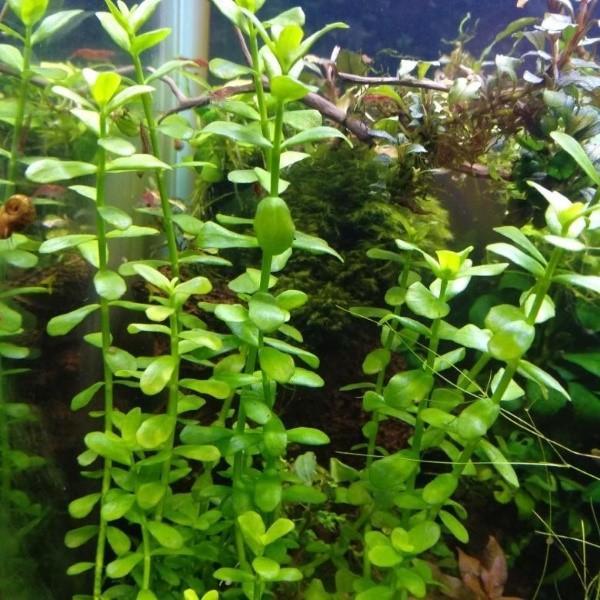Bacopa Madagascar - a necessary and useful plant for an aquarium
 Bacopa is known for its moisture-loving nature, but the most "wet" can rightfully be considered the Madagascar Bacopa. This plant not only loves water - it lives in it, and in gratitude - cleans. Such properties could not go unnoticed, and primarily among amateurs aquariums... The limited space does not affect the development and ability of the bacopa. Moreover, it feels great in aquariums, creating a comfortable environment for the fish. What does the plant look like, and what does it need for aquarium maintenance?
Bacopa is known for its moisture-loving nature, but the most "wet" can rightfully be considered the Madagascar Bacopa. This plant not only loves water - it lives in it, and in gratitude - cleans. Such properties could not go unnoticed, and primarily among amateurs aquariums... The limited space does not affect the development and ability of the bacopa. Moreover, it feels great in aquariums, creating a comfortable environment for the fish. What does the plant look like, and what does it need for aquarium maintenance?
Description of culture
Under natural conditions, Madagascar Bacopa is a marsh plant that grows on the outskirts of lakes, rivers and other small bodies of water. Moreover, the plant is able to live not only above water, but also under it. Outwardly, it is branched bushes with long succulent shoots. Stems are rather thick, bare, up to 4 mm in diameter. Along their entire length, small oval leaves are located in pairs. Their length does not exceed 3 cm with a maximum width of 1.2 cm, while the leaves taper towards the tip.
Bacopa grows slowly, reaching a height of no more than 15 cm.If the plant is comfortable, it will delight not only with beautiful decorative greenery, but also with flowering. Flowers form in the leaf axils. They are small and have a bright purple color.
Bacopa Madagascar: how to grow a plant
Due to its moisture-loving nature, bacopa is often grown as an aquarium plant at home. It is perfect for this because it creates a favorable microclimate for fish in the aquarium. Bacopa bushes also secrete substances that prevent the emergence and development of algae, and purify the water in the aquarium.
Aquarium Bacopa is an unpretentious plant and does not need special conditions. It grows at temperatures from 20 to 28 ° with a 12-hour daylight hours, so it does not need round-the-clock lighting. However, the light must be bright enough, at least 0.5 W / L. It is preferable to grow the plant in small aquariums up to 50 cm high. In larger containers, bacopa does not grow well and does not have enough light.
If the lower leaves of the bacopa began to deteriorate and fall off, all the signs of a lack of light are on the face.
As a soil for bacopa, you can use:
- coarse sand;
- small pebbles;
- fine gravel;
- a mixture of sand and gravel.
If the bacopa grows, it can go beyond the water in the aquarium. If the tops of the shoots rise above the surface of the water, it's okay. Bacopa will not die from this, since she is able to live in a surface state.
Bacopa propagates easily by cuttings. Over time, air roots begin to appear under the leaves. By cutting off the stalk, you can get a ready-made plant with its own root system. There is no need to root additionally and such cuttings can be immediately planted in the ground.